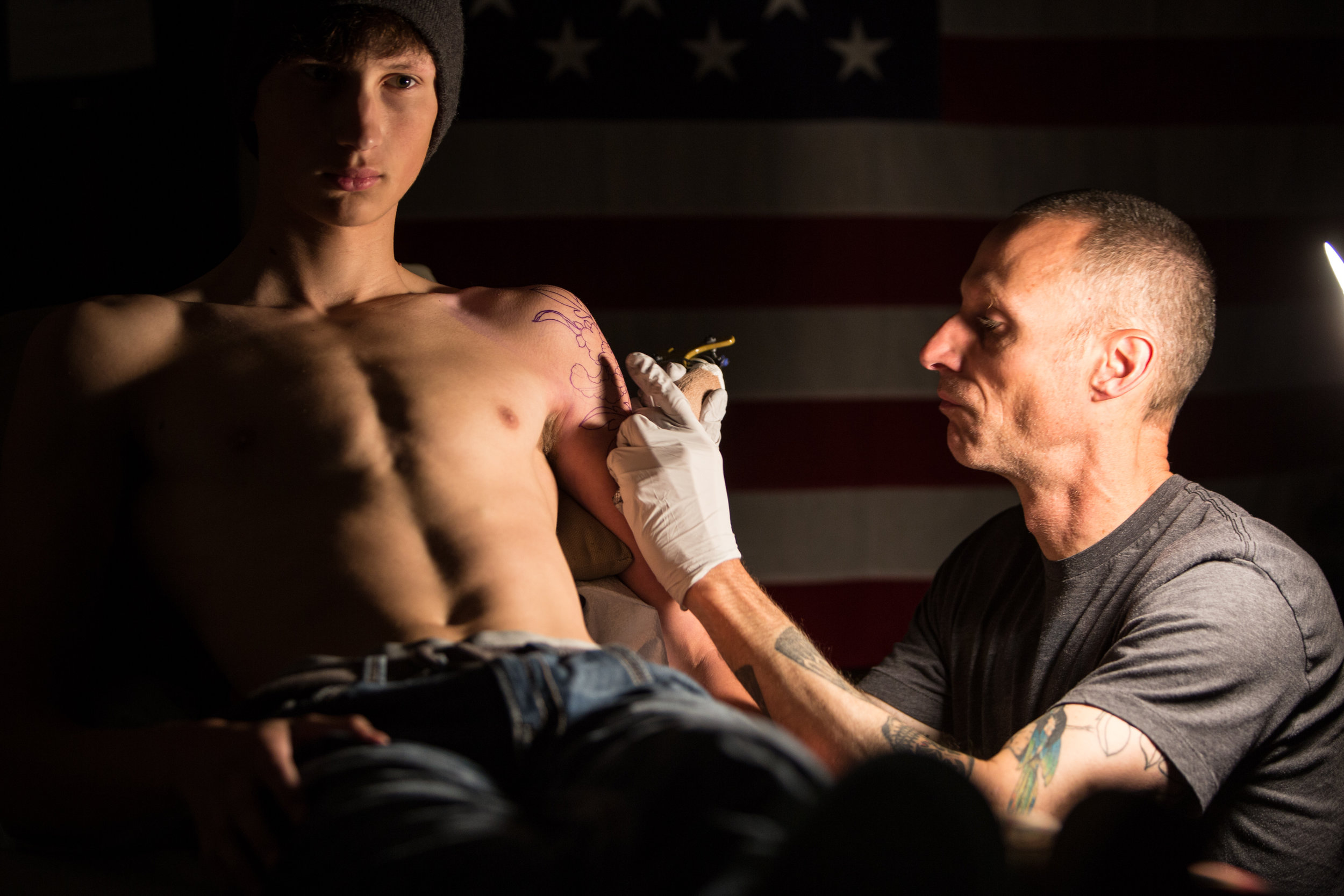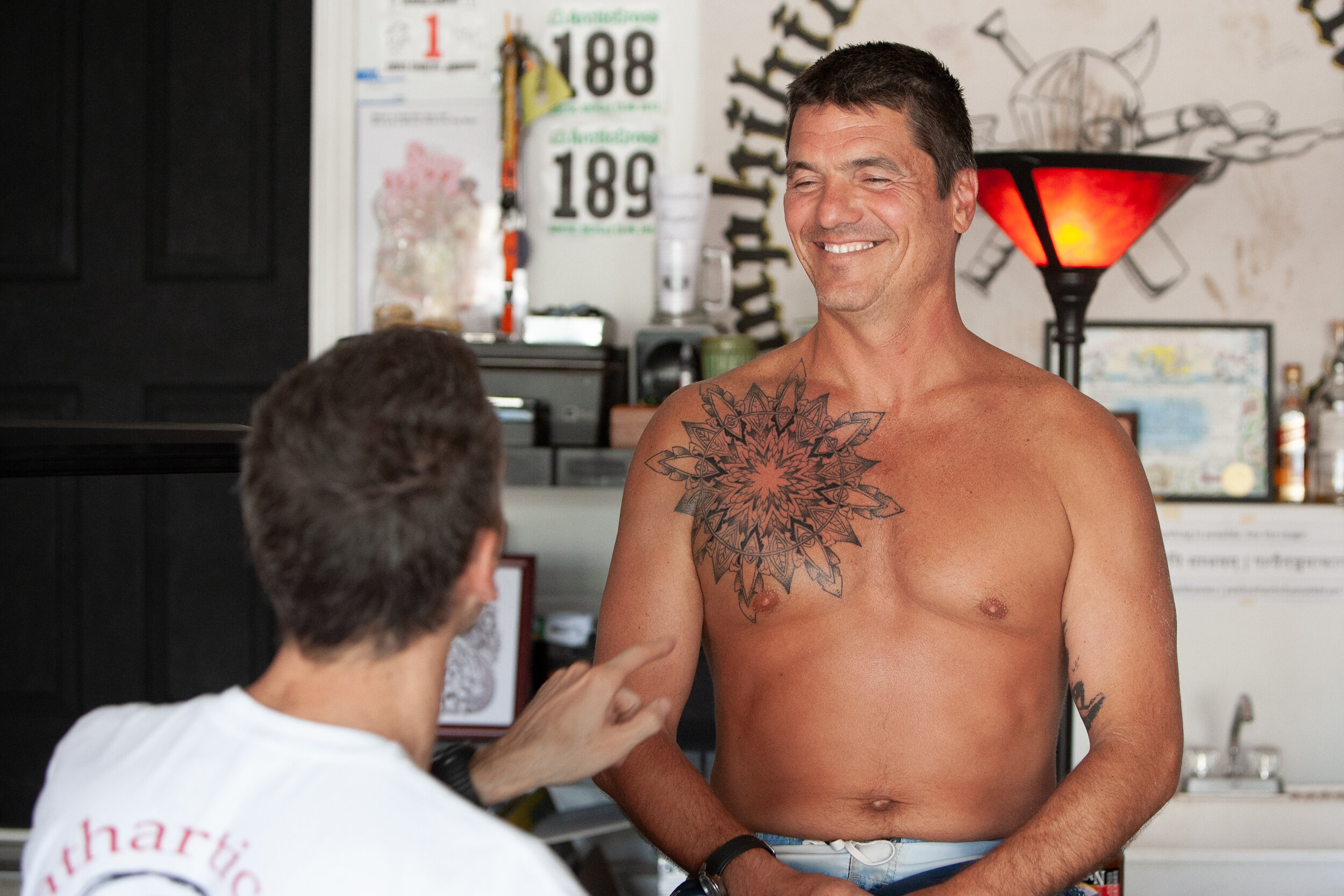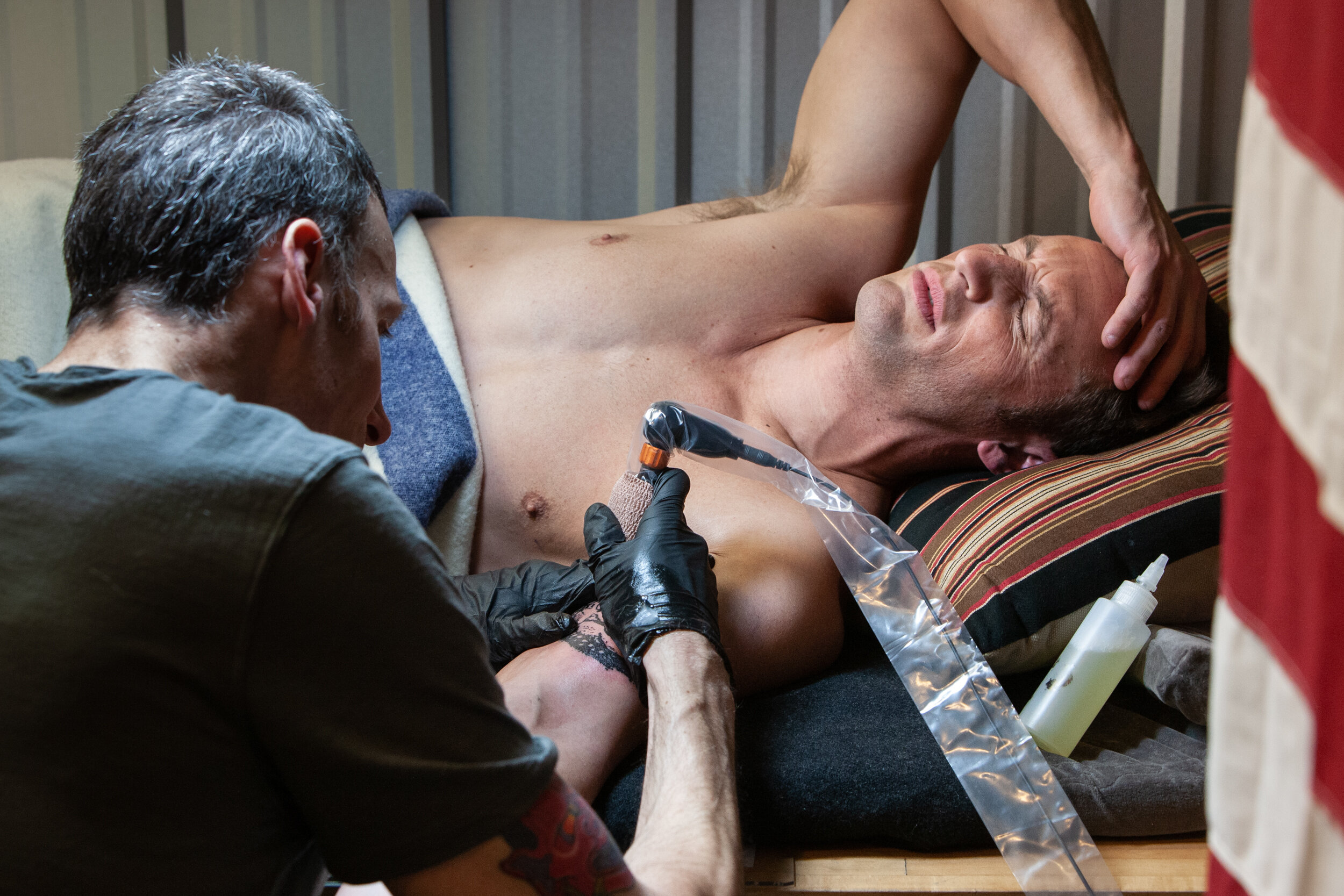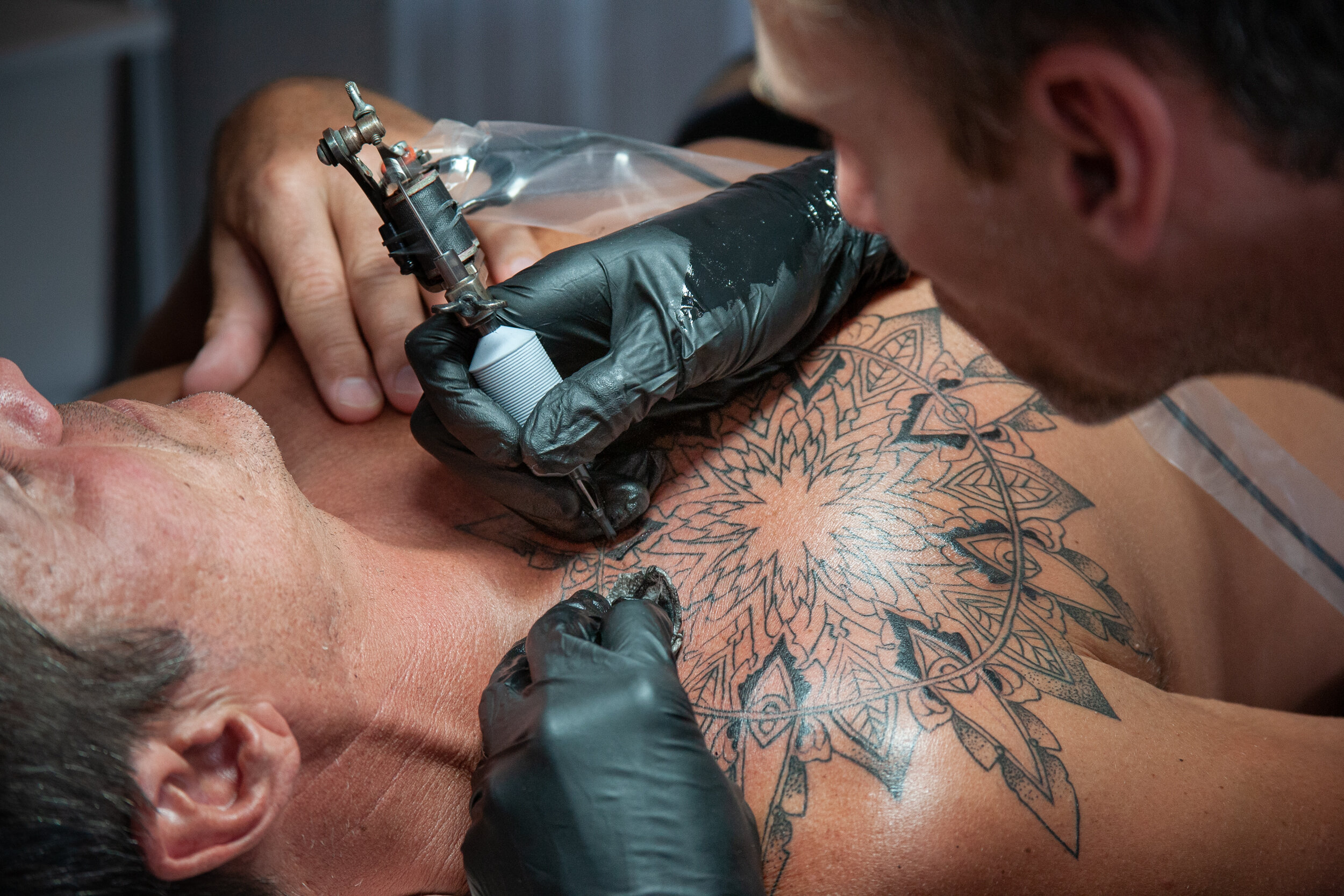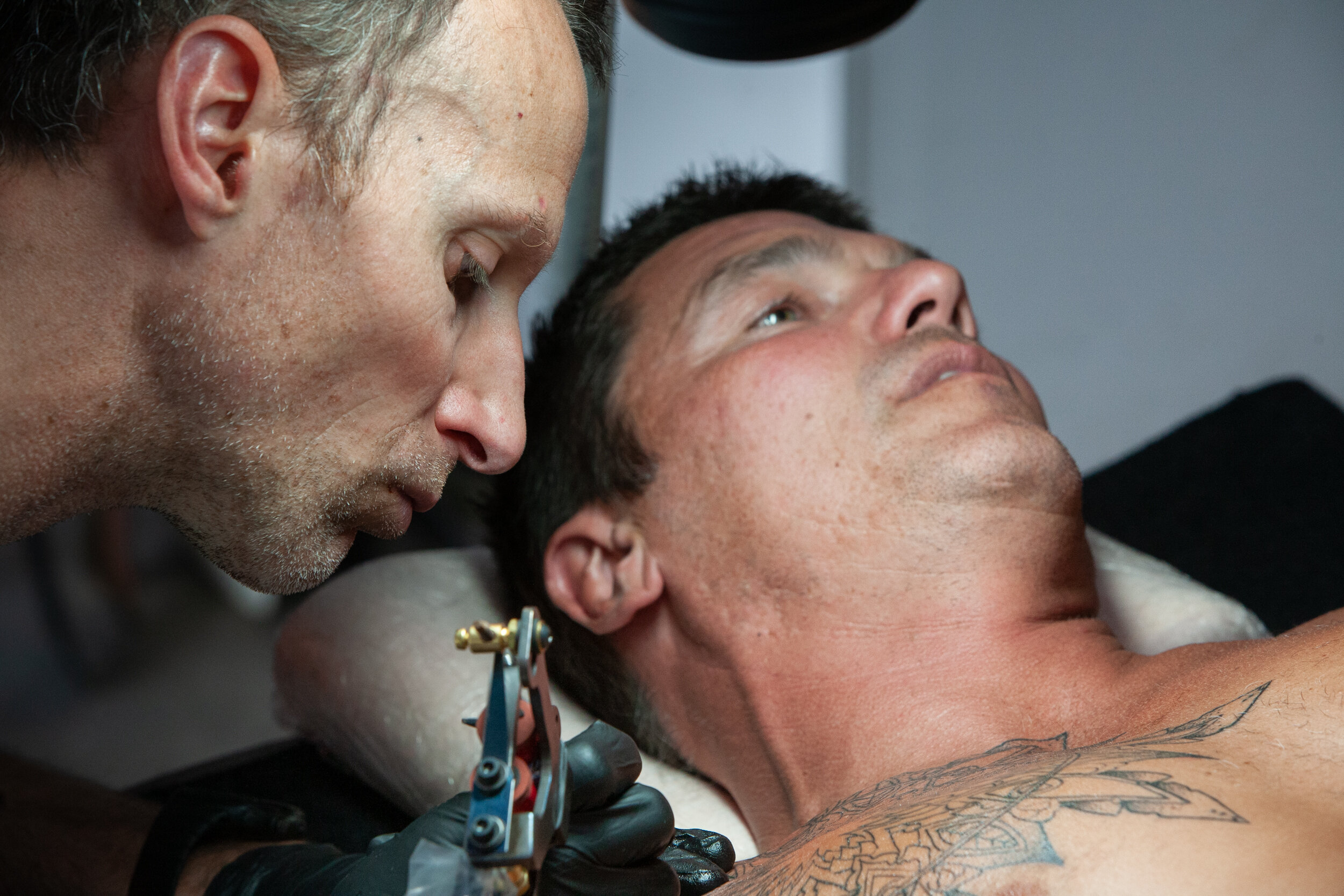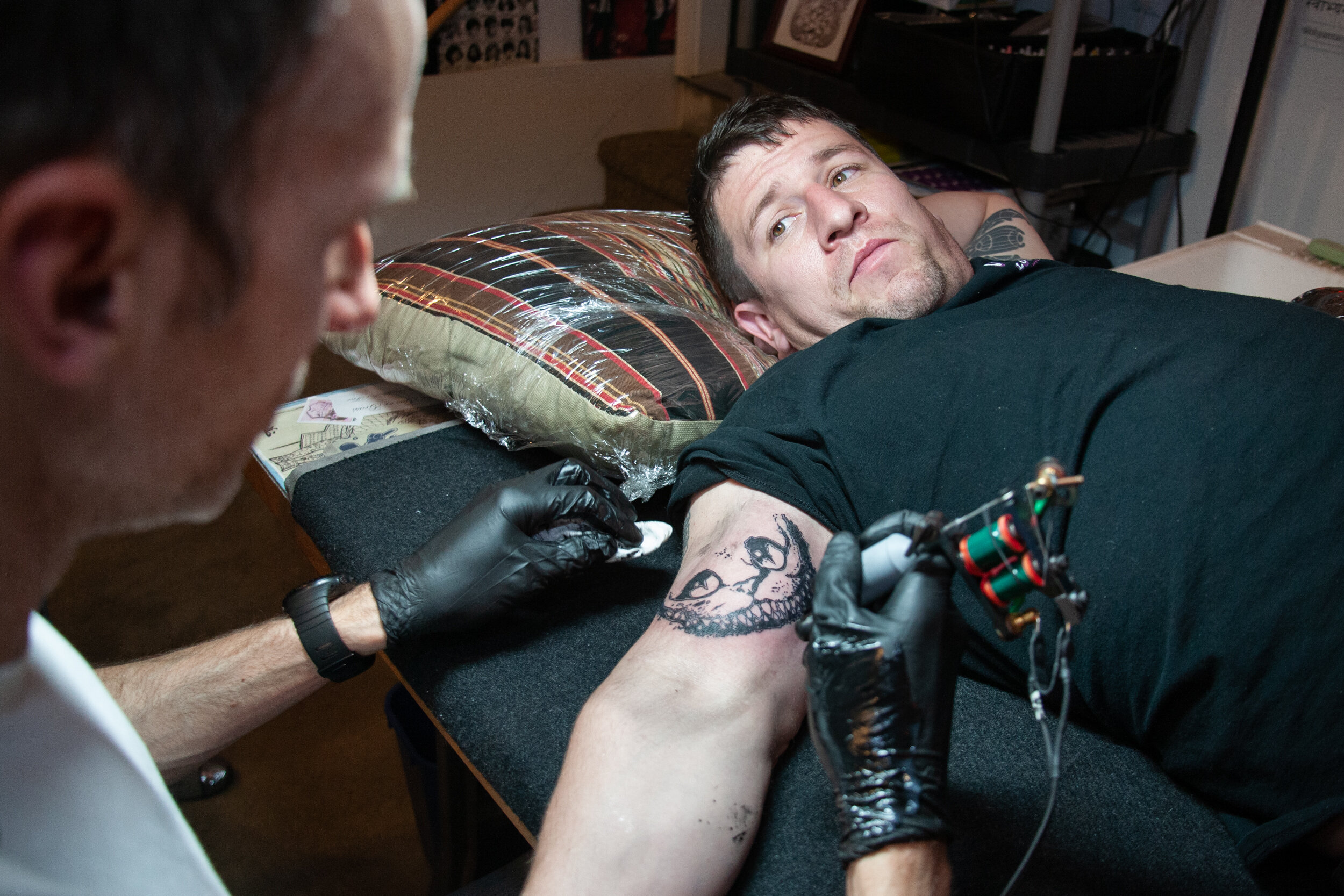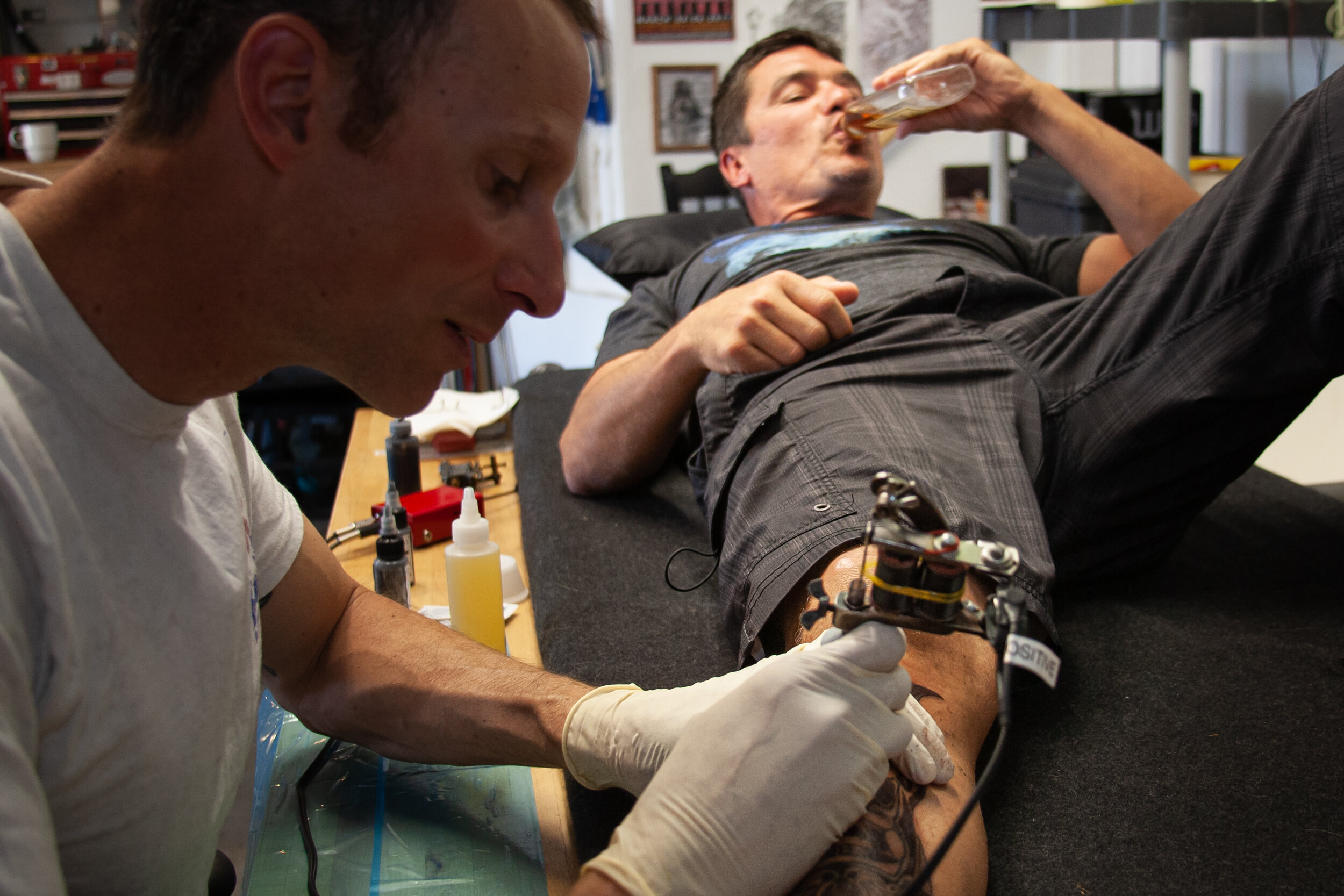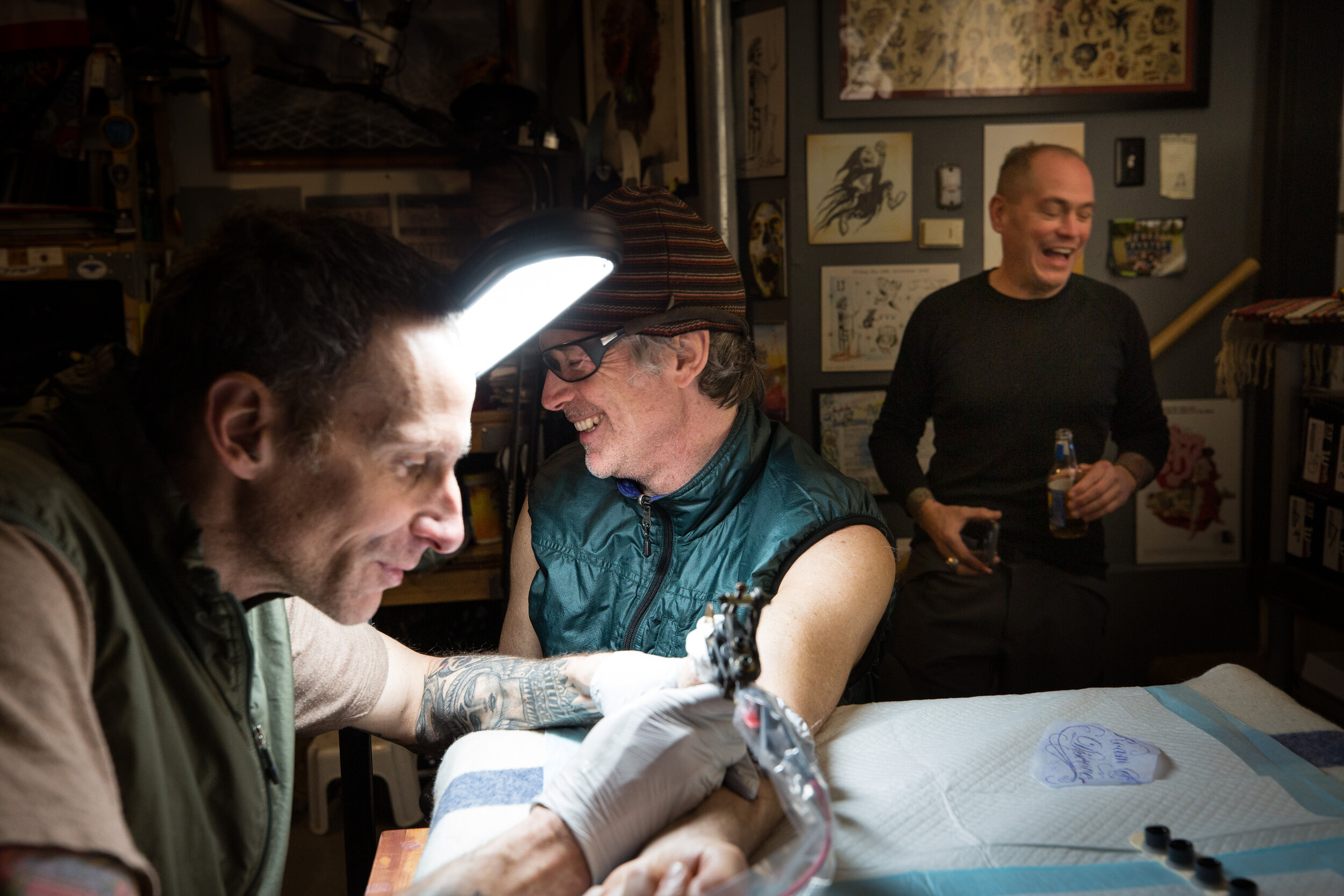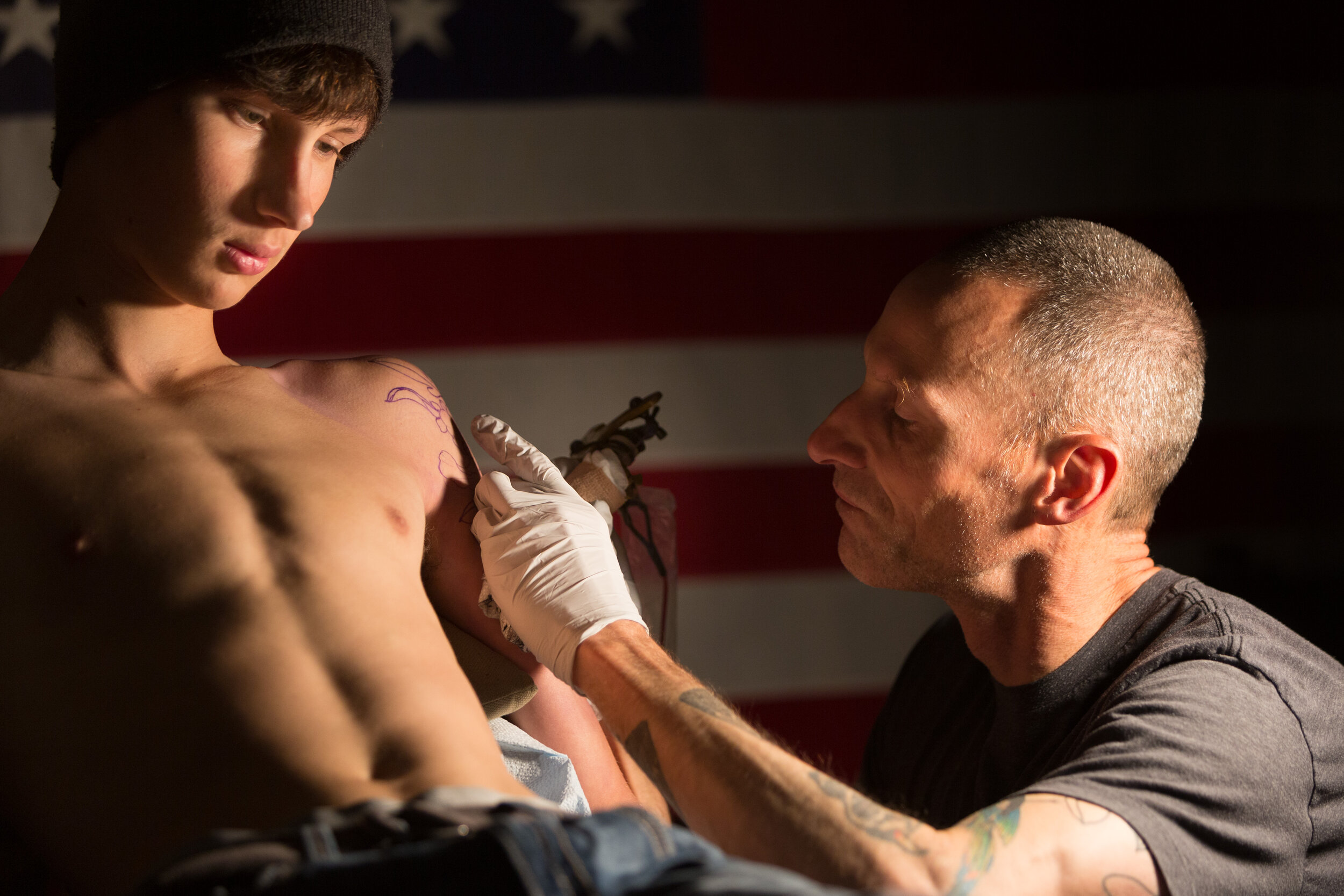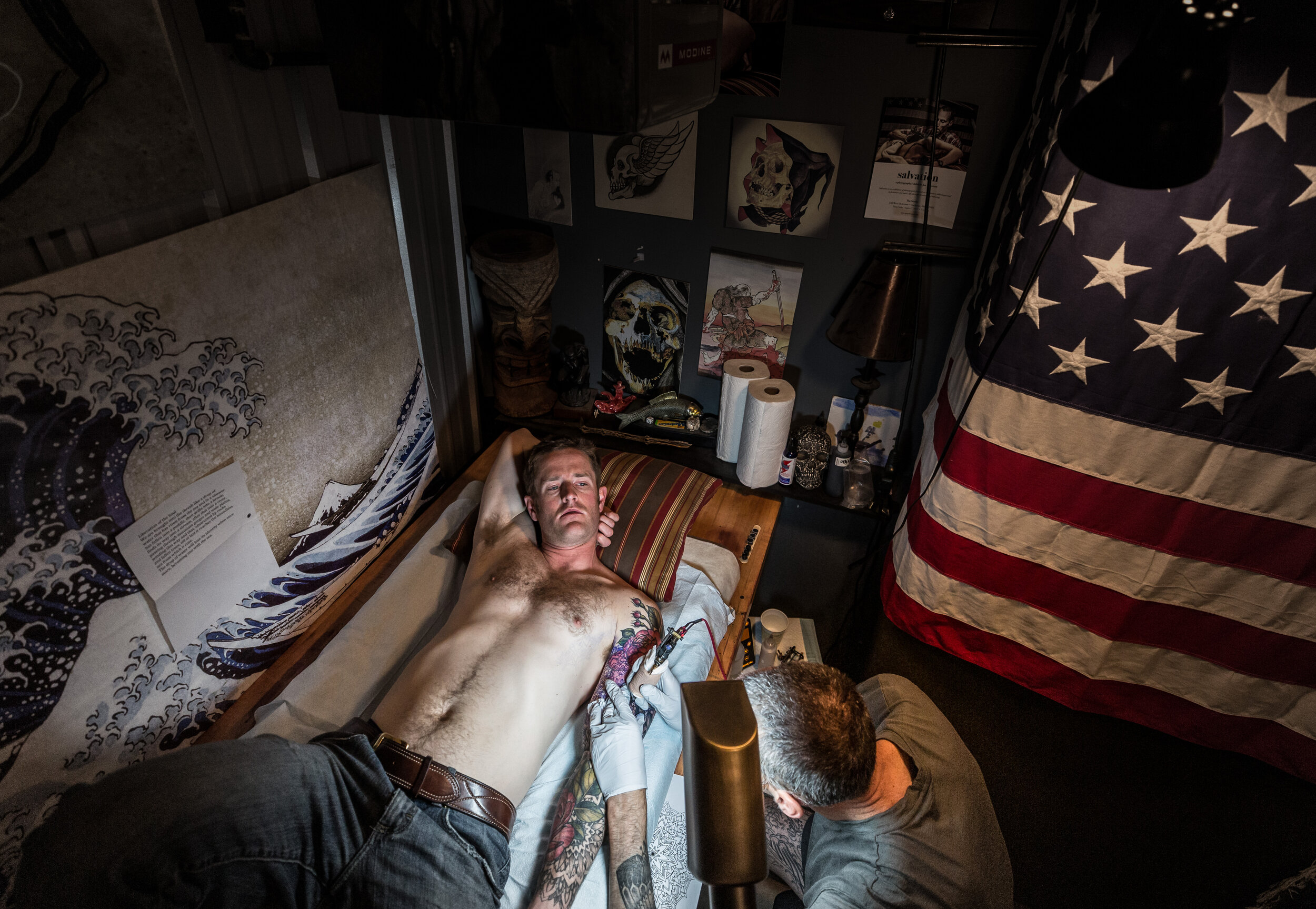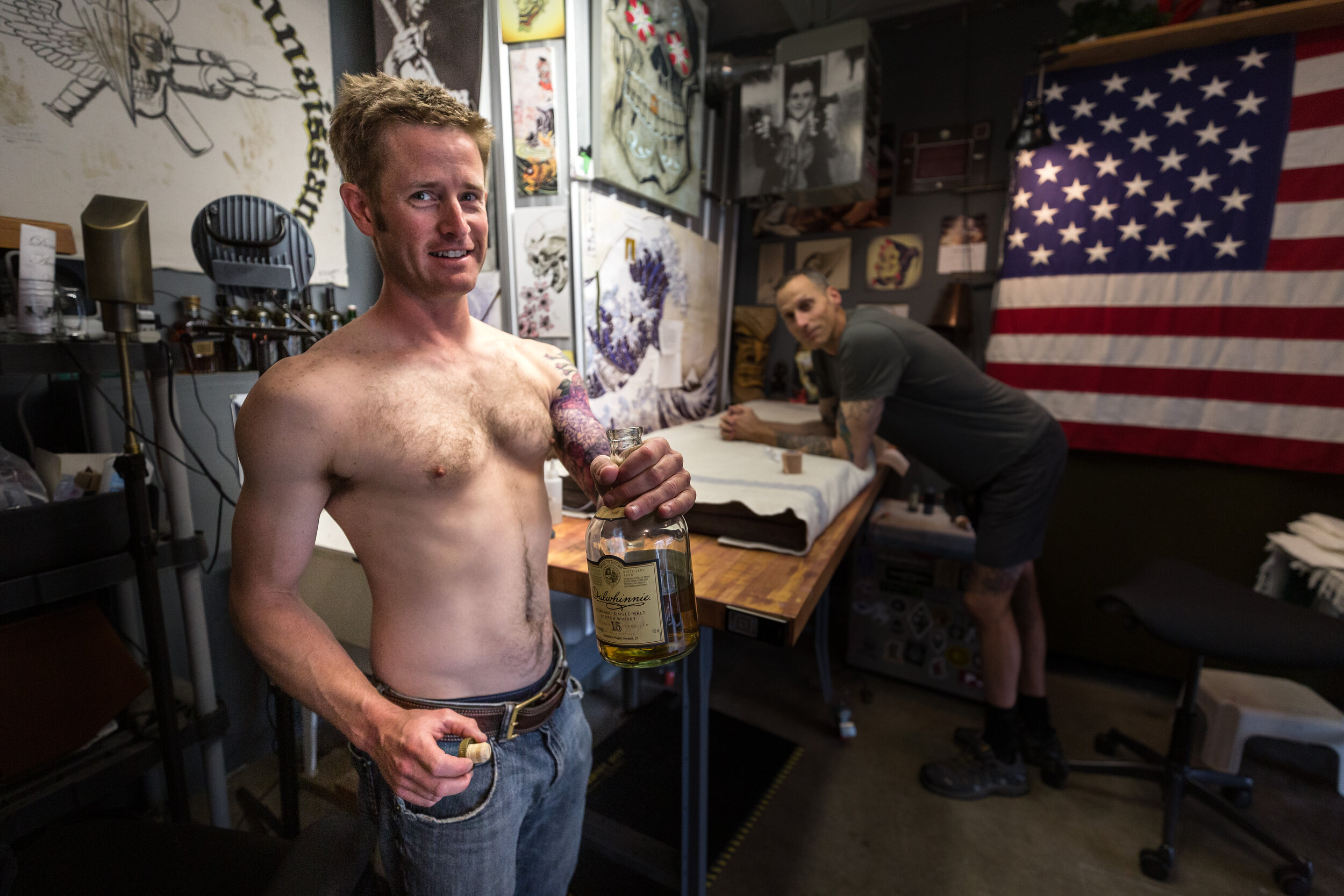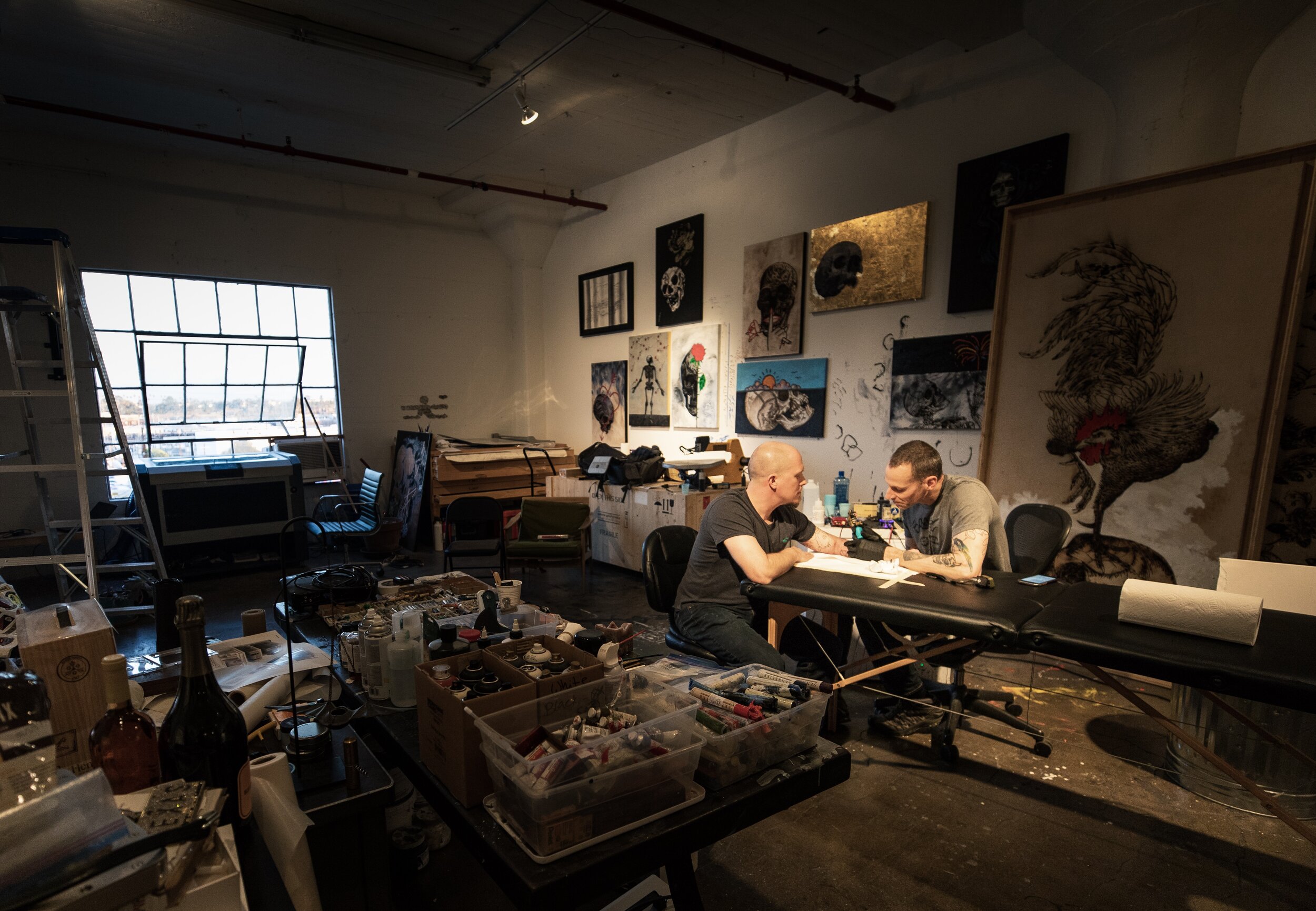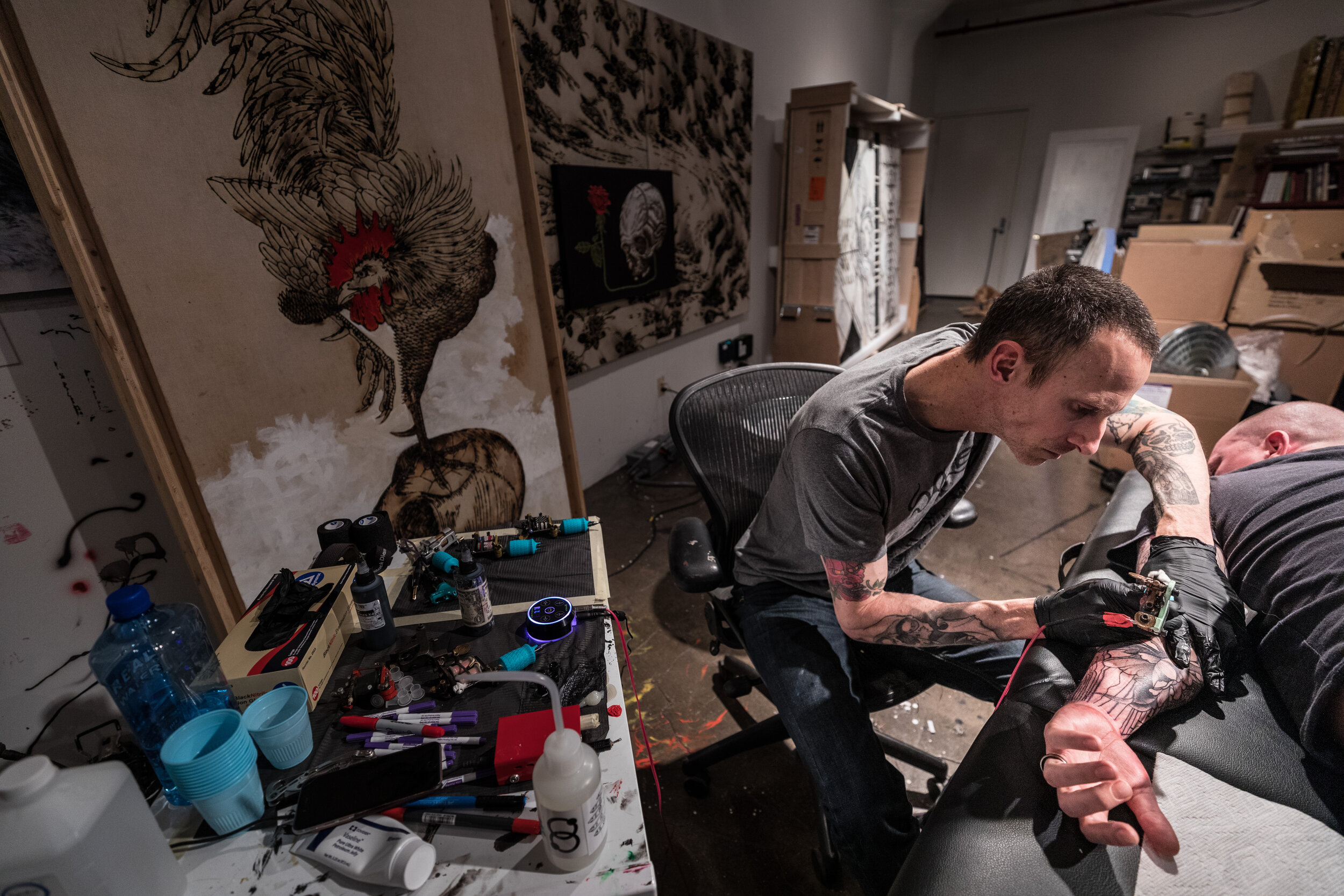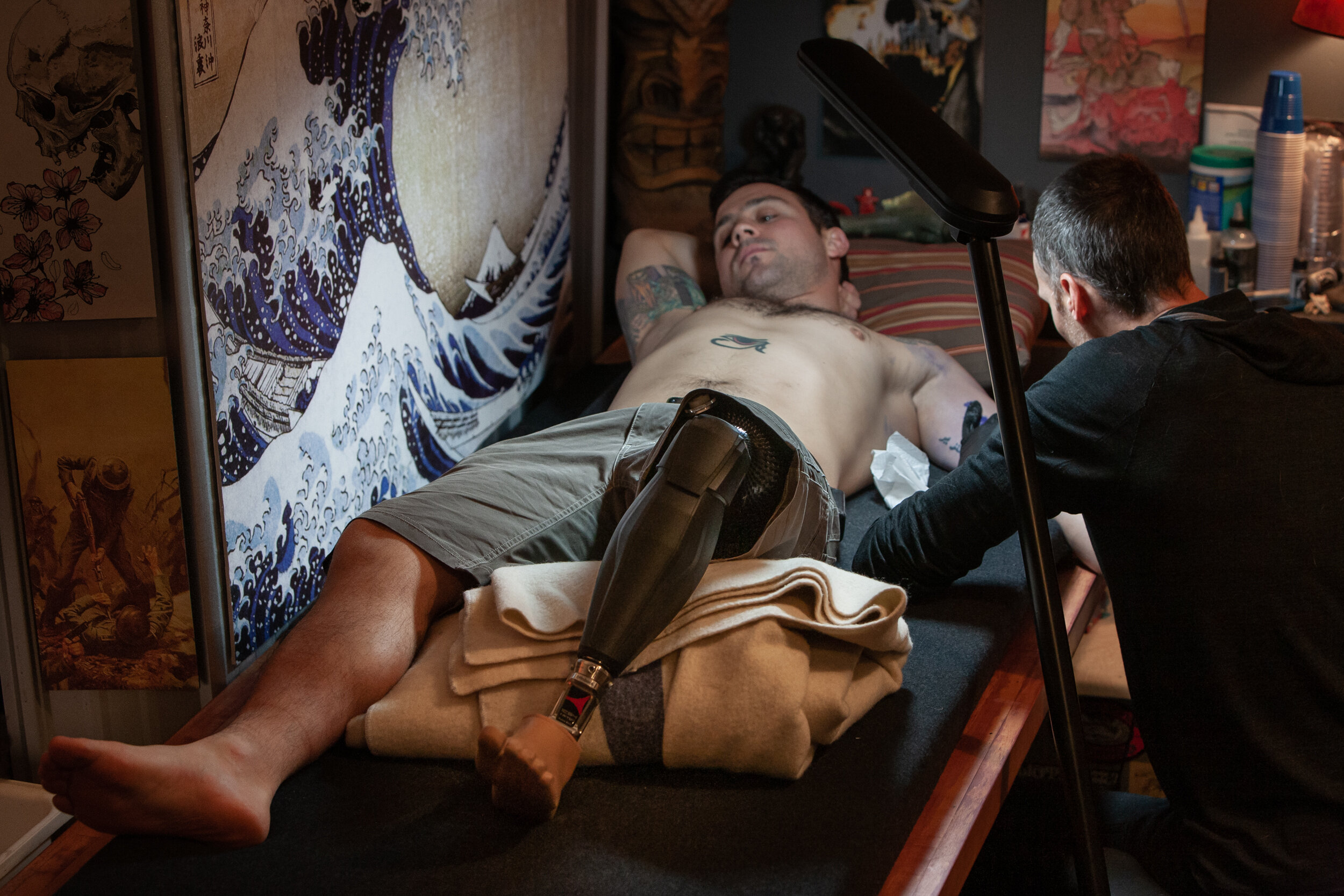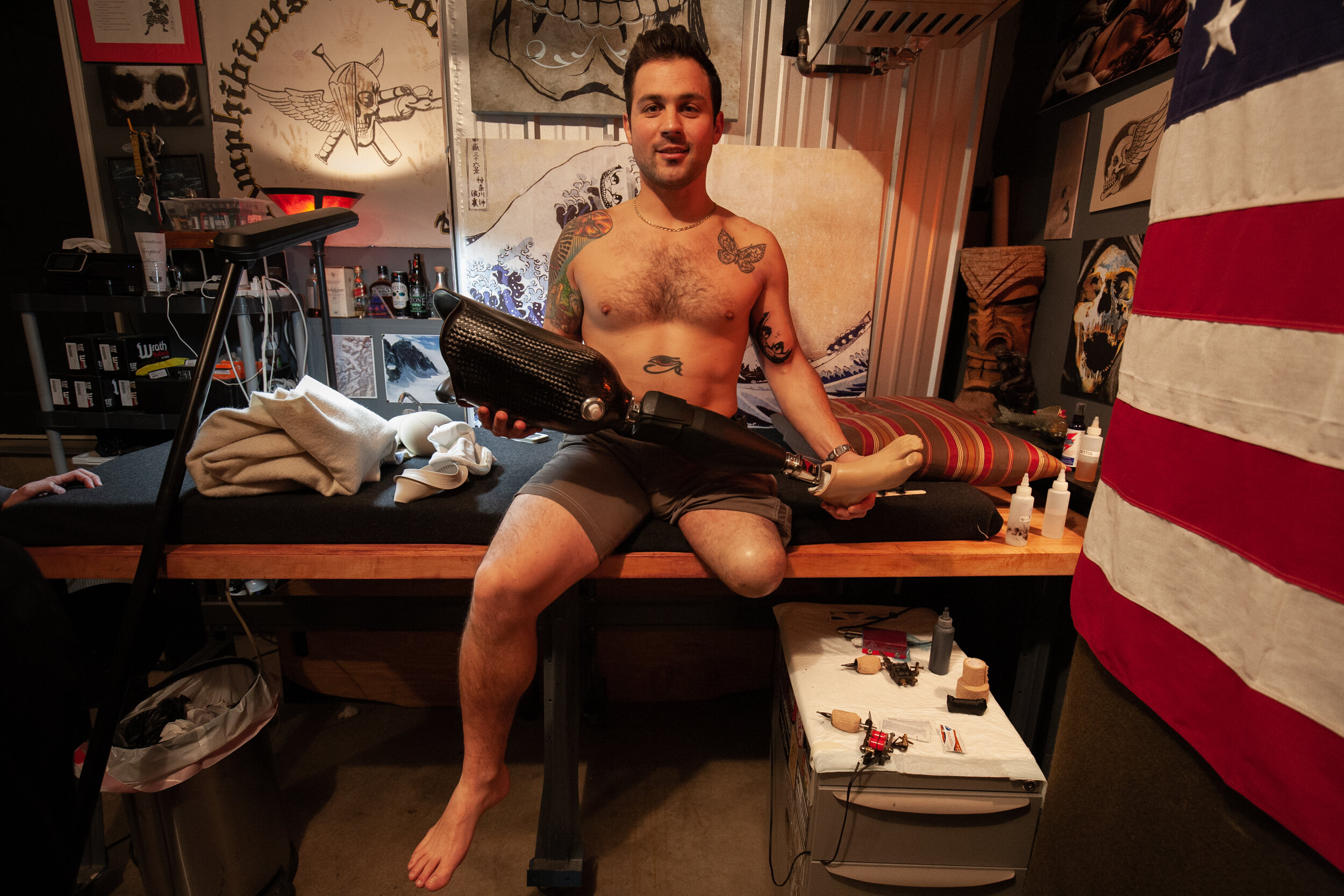ANONYMOUS SAMURAI
Featured in the Fall 2016 issue of Forum Magazine, this article stemmed from a past project called Unseen, supported by grants from the Rasmuson Foundation, the Alaska Humanities Forum, and Duty Bound, an initiative aimed at “drawing on the power of the humanities to support a deepened understanding of the experiences of Americans affiliated with the armed services.” The Anonymous Samurai explores the life of Roger Sparks, a former Air Force Pararescueman with two decades of intense combat and civilian rescue experience. Spark’s final military deployment involved a deadly mission, leaving him with profound emotional wounds and severe PTSD. Despite a persistent legacy of trauma, he learned to navigate his circumstances by relying on the transformative power of art and tattooing. In 2014, Sparks was awarded the Silver Star for conspicuous valor in combat during battle in Afghanistan in November 2010.
Imagine flying in a helicopter to an unforgiving place where the local inhabitants intend to kill you. You’re on a rescue mission with a seemingly random set of coordinates in the Kunar Province; the war-torn mountains of Afghanistan.
As you approach your destination, erratic bullets rip through the aluminum fuselage around you. Only your resolve helps you to remain still. Eventually, you arrive above a rocky mountainside and begin lowering to the ground on a thin steel cable. As you’re descending, the cable is hit and begins fraying, making your retreat back into the helicopter impossible. Still, you feel a deep sense of commitment driving you forward. The machine gun shells of a 50 caliber are falling down on you in a deluge of hot metal, reminding you that the gunner in the helicopter is the only thing keeping you alive. You’re dangling precariously above foreign soil. But all you can think of is your purpose.
Before you slam into the ground with your partner and all of your heavy combat and medical gear, your life before this moment becomes strangely intangible. Your unfinished business, erased. Your family is no longer a part of you. The things that brought you joy are gone. Your past and your future now belong to the universe.
You are about to enter an escalating firefight where you have to save as many lives as possible, as fast as you can, while simultaneously leading a platoon of injured men whose leader was just killed. You are outnumbered, outgunned, and soon you’ll be out of ammo.
Your name is Master Sgt. Roger Sparks. In the next 24 hours you will make the hardest decisions of your entire life.
Two years later—Roger is playing an old blues riff on his favorite guitar. It’s a modest instrument characterized by hard use, not unlike the musician playing it. I just met him two weeks before, and now I’m listening to him inside his garage, his “opium den,” as he calls it, in Eagle River, Alaska, where he lives.
Roger’s garage is his sanctuary where he immerses himself in the creative process. After a few minutes he stops playing so he can tune his guitar, and at the same time, he’s telling me about a Buddhist metaphor that has stuck with him throughout the years. Not just stuck with him, but carried him through. He doesn’t just repeat the sage words. When Roger recites any sort of meaningful literature, he embodies it—it’s the Zen version of speaking in tongues. When Roger conveys his hard-earned wisdom, it leaves an impression on you. Because, for a litany of reasons—Roger should actually be dead.
After Roger landed in the mountains surrounding the Watapur Valley, he would ultimately go on to save many men and watch half as many die. He and his partner would call in a large bomb strike that would render enough collateral damage for him to remember that decision his entire life. He would dodge bullets in a way that seems to only happen in movies, strangle a man with his bare hands, and be burned deeply with a legacy of human trauma that defies ordinary comprehension.
Roger tells stories in the form of metaphor because it’s the only way he knows how. It’s how he reckons the past. He translates his own raw experience through ancient knowledge of the
human condition, often through Greek mythology and Eastern philosophy. The most profound manifestation of this practice results in the creation of Roger’s own unique art—beautiful pieces that serve as more than just his language. Art is also Roger’s salvation.
When Roger finishes tuning his guitar he starts playing a repeating rhythm, bending the notes into the sound of a train moving down the tracks. It’s a blues parable told with slide guitar; the story of a hobo who experiences a sense of freedom from riding the rails. But as the musical story progresses you realize that what lies ahead, farther down the tracks, is a world of uncertainty. The kind of uncertainty that weighs heavily on your heart. And somehow, you know this story doesn’t have a fairytale ending.
Roger handles his guitar like it’s a spiritual tool. Instead of him telling you about all of the things he’s seen and done, he tells you how the experience feels.
He plays the blues because he’s a man with a storied past.
After a few minutes Roger stops playing again to tell me about the time he visited the crossroads in Clarksdale, Mississippi. His life is so influenced by the blues masters that he even collected dirt from that fabled intersection. The truth is Roger has stood at quite a few crossroads in his lifetime.
It’s not often that Roger talks about his experience in the Kunar Province, but when he does, it’s nearly impossible to comprehend. Roger’s war stories don’t translate into words. People who hear about the trauma Roger experienced emotionally shut down after just a few minutes. They listen, but don’t hear. This isn’t lost on Roger, either. And it only adds to the alienation he sometimes feels. A common person cannot possibly identify with Roger Sparks, because he has led an uncommon life, witnessing unimaginable violence.
Roger is a gifted musician and visual artist, but the medium he’s most passionate about is tattooing. His practice is aptly named Cathartic Ink. It’s a moniker that describes a level of spiritual and emotional intensity that’s palpable during his tattoo sessions. When he’s immersed in the creative process, time stops. I’ve been witness to some of these sessions and it’s comparable to extraordinary theatre, except Roger and his clients aren’t acting. It’s a dramatic process, a healing process, and not just for his clients, but for Roger as well.
The more tattoo sessions I witnessed, the more I realized that Roger’s art is a conveyance for an intimate connection with the person lying on his table. Many of his clients have faced traumatic, life-altering events.
After Roger meticulously prepares his equipment, and the needle first touches the skin, his studio fills with a palpable air of intense vulnerability, an experience that often challenged my own objectivity. At times I had to force myself to keep shooting images, while at the same time listening to intense conversations, about combat, loss, and grief.
After a long session of tattooing Roger is initially drained of energy. “Smoked,” is how he describes it, referring to the emotional and physical fatigue he feels from focusing for so many hours. Attention to detail is primary when he’s tattooing his client’s skin.
“The ink is permanent, the body is not,” Roger tells me, punctuating a story about the traditions of “irezumi,” an ancient Japanese art form. It’s a subject that Roger knows intimately.
Homage to the masters of his craft means a great deal to this man, and he credits many teachers, most of whom lived hundreds of years ago.
Roger doesn’t tattoo anyone. He politely turns down customers. He’s not a “street shop” tattoo artist, either. His work has to have a spiritual purpose, not just to his clients, but to him as well. His design work is a collaborative and emotional process, and Roger always seems to know whether or not someone is ready to go deep, as opposed to “dipping their toe” in the pool, as Roger says.
There’s a tangible sense of vulnerability and trust between Roger and his clients.
“Process is more important than outcome,” he says, “We’re more than just matter. There’s way more to us than just the explainable.”
As I was watching Roger work during one of his tattoo sessions, something on his wall caught my attention: a classic drawing of a samurai accompanied by a poem. After reading it and then studying the picture, I began to wonder. The samurai were devout Buddhist monks skilled in the use of swords. These were virtuous men who adhered to a strict moral code. To the samurai, style meant everything.
While I was watching Roger work, so focused that he didn’t seem to know I was in the room, I began to imagine him in Afghanistan two years before. I drifted through this strange daydream to such an extent that I felt as if I was on the ground with him, following him, watching his movements as though they were choreographed—the methodic navigation of a terror-filled scene. And then, suddenly, with my full awareness back in present day, I realized that when Roger was in Afghanistan—he was the samurai in the framed picture on his wall.
Roger was the anonymous samurai. ■
The Warrior’s Creed
by the Anonymous Samurai
I have no parents:
I make the heavens and the earth
my parents.
I have no home:
I make awareness my home.
I have no life or death:
I make the tides of breathing my
life and death.
I have no divine power:
I make honesty my divine power: I have no friends:
I make my mind my friend.
I have no enemy:
I make carelessness my enemy. I have no armour:
I make benevolence and
righteousness my armour.
I have no castle:
I make immovable mind my castle. I have no sword:
I make absence of self my sword.
